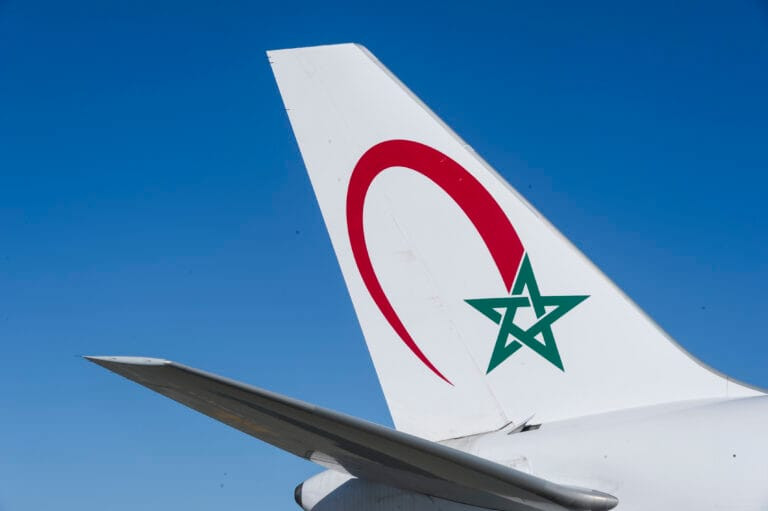Right in the centre of Morocco, tucked between the Atlantic, Mediterranean Sea and West Africa, Casablanca is rewriting the rules of cargo connectivity — without making much noise about it. While global carriers chase volume in megahubs, Royal Air Maroc has turned Morocco’s modest-sized gateway into a strategic launchpad for cross-continental trade.
What is the secret? Not scale — but positioning, precision, and a willingness to go where others won’t.
“Roughly two-thirds of the business is connecting,” Yassine Berrada, Vice President Cargo at Royal Air Maroc, said. “This shows the position of Casablanca as a hub of trade and the hub of connection.”
From oil parts destined for West Africa, to Asian electronics and European pharma, Casablanca is fast becoming the unexpected midpoint between markets. And it’s doing so with an ambition few outside the region have clocked — yet.
“Thanks to its position, it helps us serve all African and European markets, and more and more also Asian and American markets,” Berrada stated.
Positioned at the crossroads of the Atlantic, the Mediterranean, and the African continent, Morocco’s geography has always lent itself to trade. But Casablanca’s role as a freight connector is more than a matter of maps.
According to Berrada, the city’s role as a transit hub is tied to Morocco’s national identity and strategic ambition: “It is part of our history and the DNA to be a bridge between continents,” he said.
Not just a hub — a hinge
Casablanca’s Mohammed V Airport is where Royal Air Maroc’s cargo operations are concentrated. The airline also handles cargo transportation and warehousing in seven other Moroccan stations, but Casablanca alone accounts for the overwhelming majority of movement.
“At here in Casablanca, we have 95 percent of the cargo going, coming and transiting” Berrada outlined.
Crucially, it’s not just Moroccan exports that pass-through Casablanca. The city serves as a transit engine — a connector between origin and destination points across continents. That’s where Casablanca’s true strength lies.
“We have roughly 60 percent of the traffic we are dealing with in cargo, which is connecting traffic,” he continued.
“This shows the position of Casablanca as a hub of trade and the hub of connection.”
Whether it’s pharmaceuticals coming from Europe destined for West Africa or fresh produce from Morocco or West Africa heading to North America, Casablanca acts as the hinge point.
Royal Air Maroc’s global expansion
Casablanca’s prominence is expected to grow further as Royal Air Maroc embarks on a bold long-term fleet expansion — part of a broader national strategy to elevate Morocco’s global aviation footprint.
“In fact, the airline has a bold vision that aligns with the country’s growth strategy,” Berrada explained. “There are plans to reach 200 aircraft within roughly 15 years. So in 2037, the airline has the ambition to reach 200 aircraft from 60 today.”
New routes are already being rolled out as part of that vision. Berrada highlighted recent and upcoming expansions into Asia and South America — regions that offer both passenger growth and untapped cargo potential: “We have reopened Beijing and São Paolo two months ago, as well as opened completely new routes to us like Toronto.
We plan to open new routes in China, in India and also North and South America. All this will bring business for the cargo because we have a lot of capacity in big aircraft going to those.”
Handled. Tracked. Delivered. Casablanca Style.
Handling thousands of tonnes of cargo across dozens of destinations requires more than good geography. Casablanca’s cargo team has increasingly turned to digital tools to streamline warehouse operations and reduce friction along the journey.
“We have been working for years now with CargoSpot,” Berrada shared. “It is helping us to streamline our operations from booking to delivery of the freight.”
The most recent addition is CargoSpot Mobile — a handheld tool that lets warehouse staff track and manage shipments in real time, whether preparing goods for export or locating incoming freight.
“It’s a small digital device to locate the cargo… for import, you know where the freight is,” he said. “Staff have their device and they can do the task, say the task they have done, and where the freight is.”
This visibility extends to clients, customs, and ground handlers, especially as more global authorities require advance data submissions for all inbound cargo.
“All the customers now use digital tools,” he continued. “You have to send the data of the freight before even the aircraft takes off. Whether it’s in, for example, Nigeria, Senegal, or in any other country like the European Union, Canada, United States, let alone Morocco — every country now has these digital tools.”
Handling the highs and lows
In Casablanca, cargo flows are rarely uniform. Some months, Royal Air Maroc Cargo may process 150 tonnes in four hours. On other days, that figure might be cut in half. Adjusting to this volatility is part of the daily rhythm for Berrada and his team.
“Each morning I see the situation with the colleagues on the market and operations,” he said. “I will go into the warehouse to see what the situation is.”
While peak seasons like Ramadan vary depending on the calendar year, Royal Air Maroc relies on its passenger flight schedule to add cargo capacity during seasonal surges.
“We can add some flights… we are dealing with GSAs and with our sales team to see what we can run on the new flights we have,” Berrada expressed.
There is a quiet confidence that runs through Berrada’s comments — not just in Royal Air Maroc’s cargo strategy but in Casablanca’s evolution as a logistics centre. It’s one of the most connected, resilient, and steadily growing.
“We have good staff, honestly. We have hardworking and efficient people,” he stated. “We have a very good strategy, especially with connecting people, connecting cargo… and we have a very good location.”





